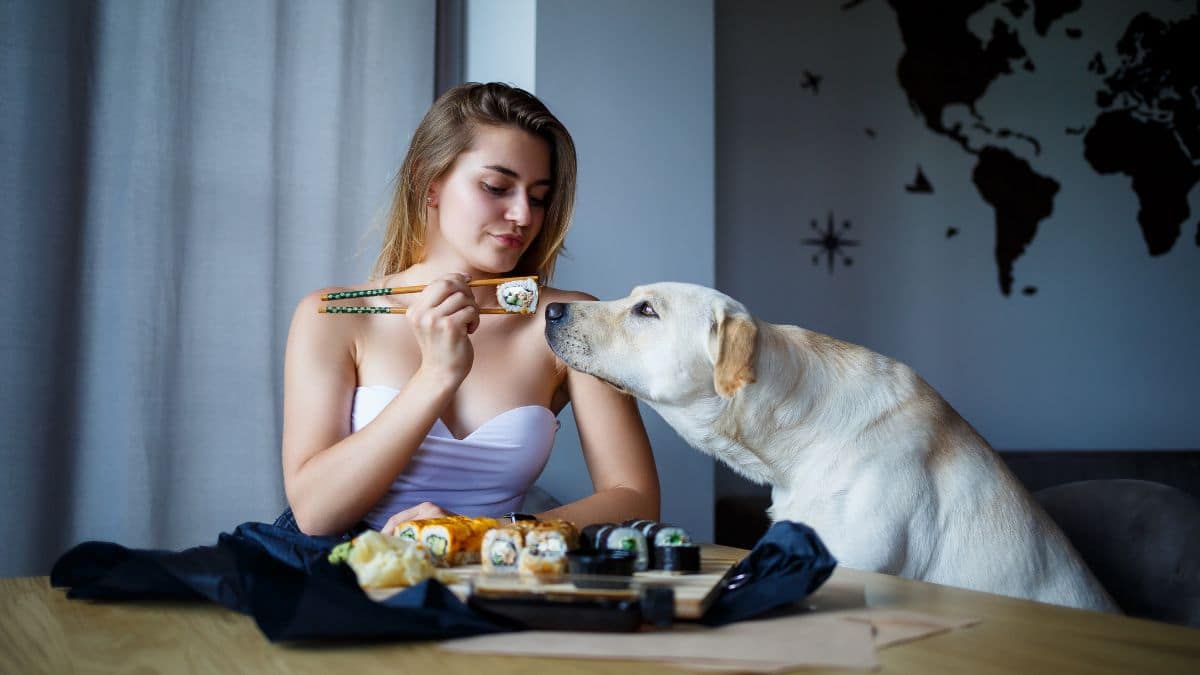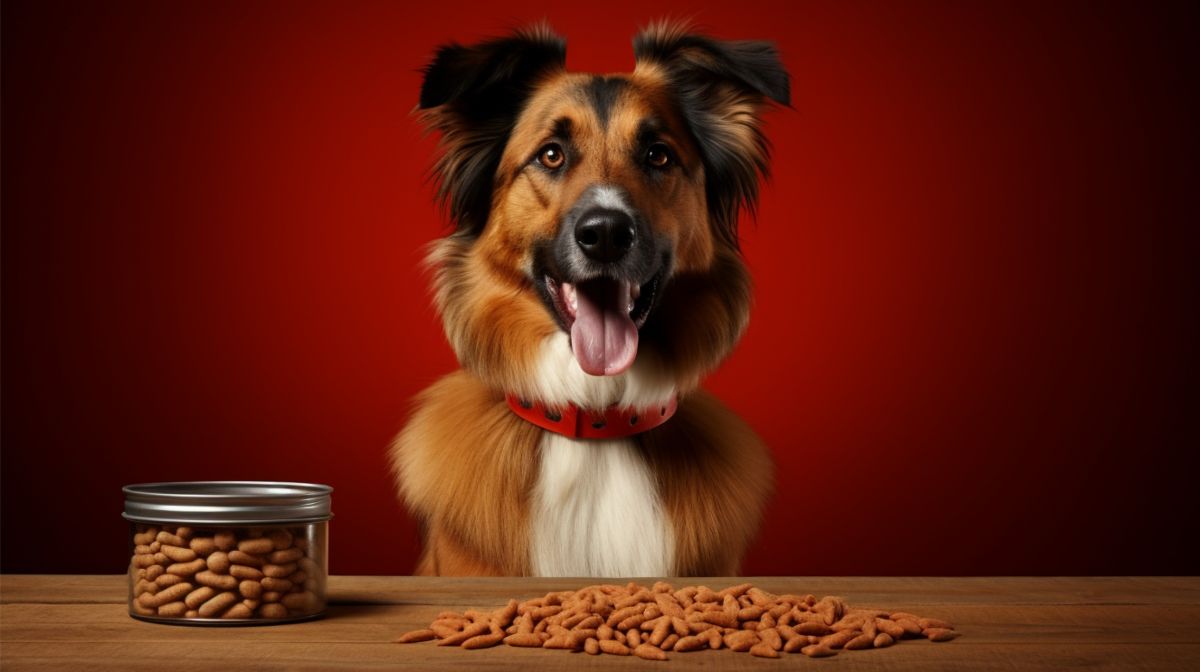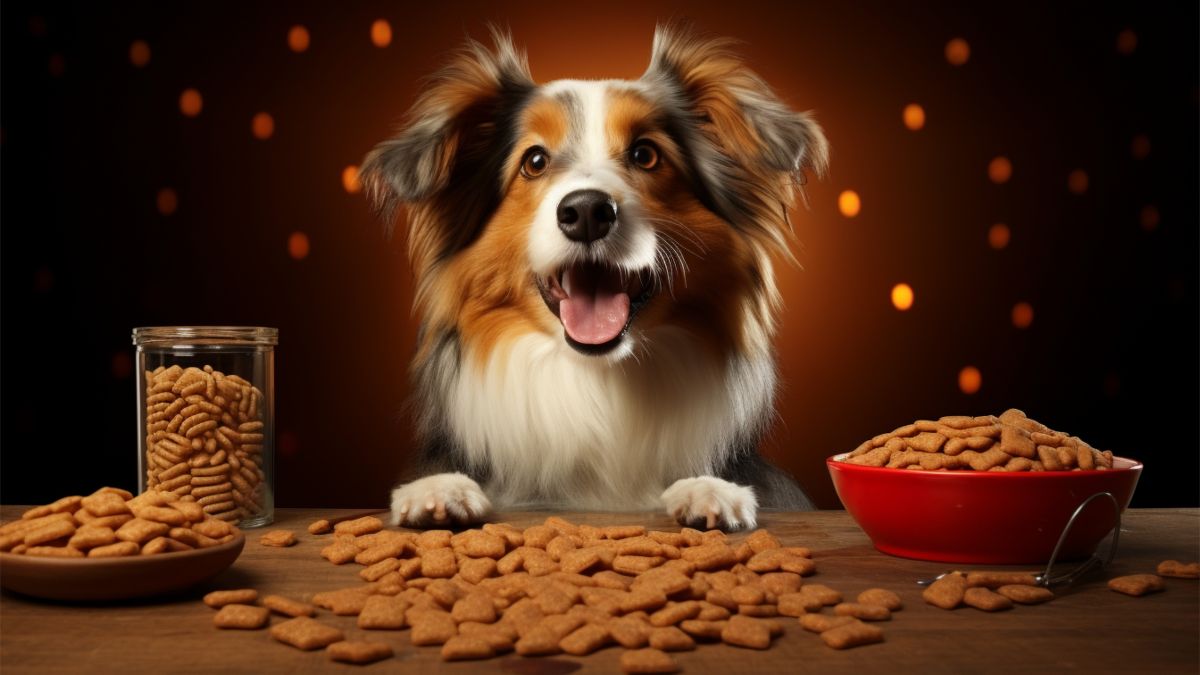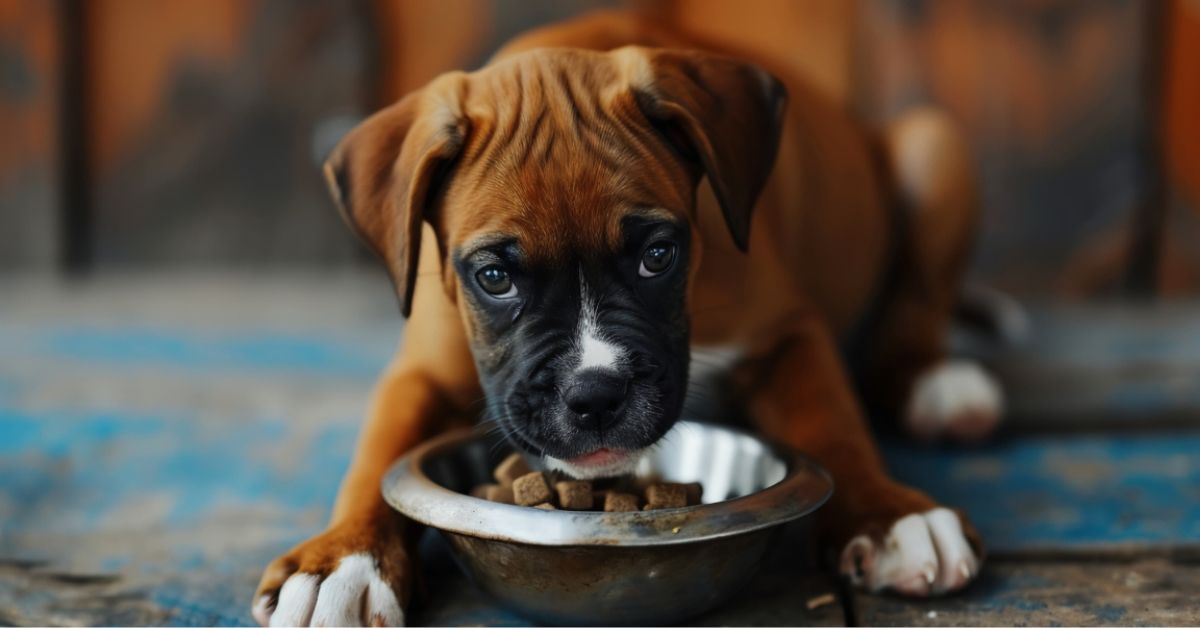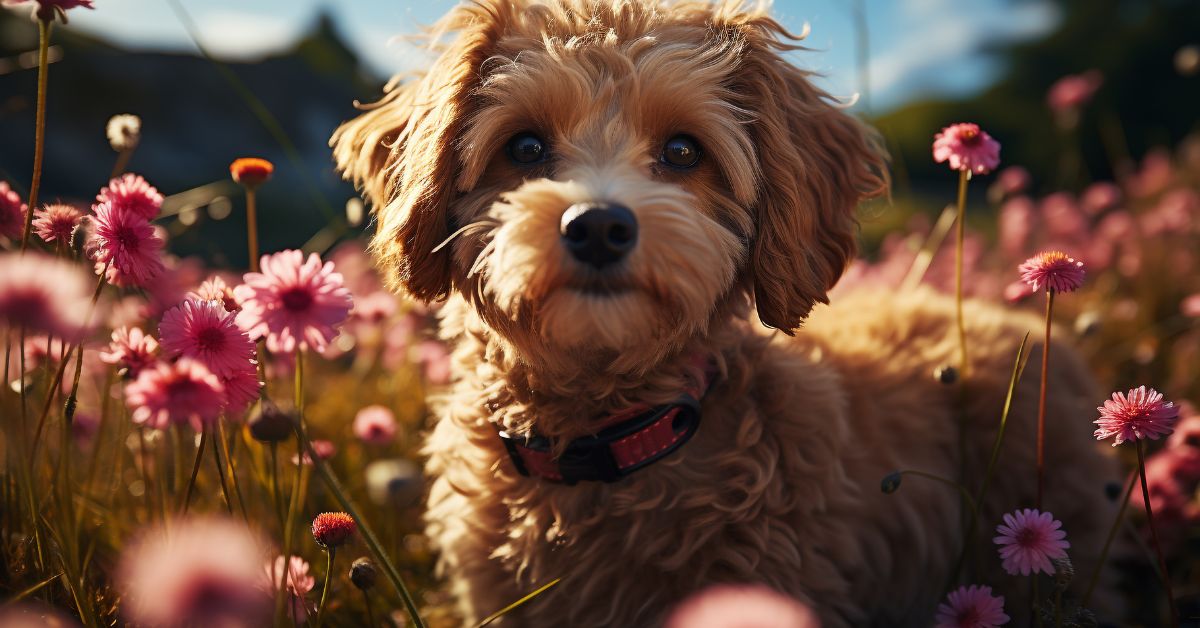Do you know the cause of why do dogs play with their food? Dog’s playful behavior with food stems due to natural instincts, boredom, anxiety, stress and attention-seeker.
Basically, playing with food serve as mental stimulation, satisfying their curiosity and providing a challenge. Additionally, this can be a form of explore and understand the properties and textures of different food items.
This article is designed for about the exact cause of playing with food and others associated issues. We earnestly request you to read this article to learn overall reason of playing with food.

Understanding Canine Behavior
Understanding canine behavior is need if you want a form a strong bond with your furry friend and to their well-being. Body language, social structure and communication are the combination of canine behavior.
Body language
Dogs generally communicate with others through body language. This body language includes posture, tail position, ear placement, and facial expressions to gauge their mood and intentions.
Social structure
Dogs live with a hierarchical social structure and those responds clearly within this structure.
Communication
Dogs use vocalizations like barking, growling, and whining to communicate with humans and other dogs.
Importance of Play in Canine Behavior
Play is indispensible for a dog’s physical, mental, and emotional well-being. Here, we include some point to describe the importance of play in canine behavior.
Physical exercise
Play provides dogs with much-needed physical activity that help to maintain a healthy weight strengthen muscles and improve cardiovascular health. Additionally, it prevent obesity and others health concern.
Mental stimulation
Play stimulates a dog’s mind, provide mental enrichment and prevent boredom. And play is most essential for intelligent breeds who are suffering from mental challenges. Interactive toys puzzle feeders, and games like hide-and-seek is the remarkable play of them.
Socialization
In addition to, play gives a chance for social interaction that helps to learn appropriate social behavior. They also learn the communication skills and interaction with dogs and humans. Overall, play improves social skills and reduces likelihood of behavioral problems such as aggression and anxiety.
Bonding
For making bond between dog and humans, play is essential undoubtedly. This also creates trust and reinforces the emotional connection between the dog and owner. Besides, play enhances communication and understanding among them.
Potential Reasons for Playing with Food
There is several cause of potential cause for playing with food. Some are included here:
Boredom
Dogs feel boredom easily on the same type of food. So, they play with their food for entertaining themselves.
Exploration
Naturally, dogs are curious and investigative animals. So, they play with their food for scrutinize its texture, smell and taste.
Attention –seeking behavior
Most of the dogs play with their dog food to get attention of its owner. And playing is the easy way to get the attention of owner.
Stress or anxiety
Due to stress or anxiety, dog engage in playing with their food. Basically, this playing is works as coping mechanism for dogs.
Hunger
Playing with food is the indicator of hungry of the dog. Also, a dog tries to find out the best way by this playing.
The Hunting Instinct
The hunting instinct is the innate behavior of dogs that is manifest by several behaviors. Those are:
Chasing
Dogs exhibit chasing behavior such as a ball, a toy, or even small animals like squirrels or birds.
Stalking
While dogs crouch low to the ground, moving stealthily towards a target, they show stalking behavior. And this this mimics the behavior of wild predators.
Pouching
Pouching is a common sign of hunting. In pouncing, dogs might leap forward suddenly and try to capture or pin down their target.
Digging
Digging is the indicator of hunting instincts. Indeed, digging is known as a way to uncover burrowing prey or to create shelter.
Shaking or biting
During catching their like toy or a ball, dogs may instinctively shake it vigorously or bite down on it. And this is called shaking or biting and it is the indicator of hunting instinct.
Behavioral and Training Perspectives
Understanding natural behaviors
Hunting instincts are the common nature of the dogs that helps trainers and owners to make easy understand about the certain behavioral manifestation of dogs. Dogs show behaviors such as chasing, stalking, or digging.
Social behavior
Dogs are social animals with complex communication system such as hierarchies, communicate through body language, vocalizations, and scent marking.
Learning Theory
Additionally, dogs learn through various mechanisms such as classical conditioning, operant conditioning, and observational learning.
Environmental Influence
The environment largely influence (socialization, past experiences, living conditions) dog’s behavior.
Positive Reinforcement
You can arrange reward-based training methods focus on reinforcing desired behaviors with rewards like treats, praise, or play and this arrangement encourages dogs to repeat behaviors.
Consistency and Clarity
Clear communication and consistent expectations are vital for effective and essential training for dogs.
Patience and Persistence
Training requires enough time and patience because dogs are not learning behaviors instantly. That’s way; consistent practice and positive reinforcement are needed to learn the dog.
Social and Environmental Influences
Social and Environmental Influences largely affect the dog’s behavior. Some of these are included here:
Owner interaction
Dog’s owner primarily influences the dog’s behavior especially in the interaction with food. Owner’s positive and negative interaction influence the dog’s behavior of playing with food.
Household dynamics
The activity and dynamics within the household like the presence of other pets or family members largely influence a dog’s behavior around food. Moreover, competition for resources in a multi-dog household leads to behaviors like playing with food.
Feeding routine
Additionally, dog’s feeding routine and schedule influence their behavior around food surely. Dog may be less to play with food if you feed the food consistently in comparison with their feeding times is irregular.
Feeding environment
Surrounding environment also influence the dog’s behavior. Dog feel encouraged on eating in a calm and quiet feeding while a chaotic or stressful environment may lead to behaviors like playing with food.
Training and socialization
The dog’s training and socialization is essential for shaping their behavior around food. Dogs that are properly trained and socialized are likely to exhibit appropriate behaviors around food. But, most of the dogs engage in undesirable behaviors like playing with food because of lack of training and socialization.
Previous experience
Past experiences also affect the dog’s behavior. For example, dog shows behaviors like guarding or playing with food as a way to cope with perceived threats to their resources if they have past experience of food competition.
Health Considerations
There are several visible health concern if dog’s behavior around food. Those are:
Dental health
Dental problems such as gum disease, tooth decay, or misaligned teeth are not favorable for eating food and it cause uncomfortable situation for dogs. So, they exhibit behaviors like playing with food as a way to alleviate pain.
Digestive issues
Due to digestive issues like gastritis, food allergies, or sensitivities, dog may play with their food. Mainly, discomfort engages in behaviors like playing with their food.
Gastrointestinal Disorders
Gastroenteritis, inflammatory bowel disease (IBD), or gastric ulcers can cause nausea, vomiting, or abdominal pain in dogs. And dog shows reluctance on food because of these problems.
Training and Management
Training and management strategies surely to help address and modify a dog’s behavior around food and some are mentioned here:
Positive reinforcement training
You can use positive reinforcement techniques to encourage desirable behaviors around food and reward the dog with treats, praise, or other rewards if they maintain the appropriate eating behaviors without playing with it.
Consistent feeding routine: Establishing a consistent feeding schedule for dog is crucial. Basically, schedule feeding help to avoid leaving food out all day. Additionally, it helps to regulate the appetite and helps to reduce the likelihood of them playing with their food.
Mealtime etiquette training
Furthermore, you should teach dog during mealtime through training exercise (commands like “leave it” or “wait” to discourage). And this training increase interest on food without playing with food.
Food dispensing toys
Besides, you can arrange interactive food dispensing toys or puzzles to engage their minds and satisfy their natural instincts to forage and work for food. By taking this approach, you can reduce the likelihood of them resorting to playing with their food out of boredom.
Feeding in a calm environment
Also, you create a calm and quiet feeding environment that minimizes distractions and stressors during mealtime to help them focus on eating.
Address Underlying Health Issues
If you want to increase the interest on the food by avoiding playing with food, you consult with a veterinarian to rule out any underlying health issues that address medical concerns such as dental problems or digestive issues.
Addressing Food Play Behavior
For addressing food play behavior in dogs, you require a combination of training, management, and understanding of your dog’s needs.
Training
You teach your favorite dog through command, treat and reward if your dog follow the command or not.
Feeding routine
In addition to, you establish a regular feeding schedule and routine for reducing the possibility of playing with dog that helps to manage dog’s behavior.
Feeding area management
Then, you create a designated feeding area for creating a calm space. Indeed, a calm space is friendlier for keeping concentration on food of dogs.
Case Studies and Expert Insights
Here we include a couple of case studies and insights from experts that shed light on why dogs may play with their food:
Max, a one-year-old Labrador retriever, engages in playful behavior with his food for observing the playing with food. He observed that dogs paws at it, and even nudges it with his nose before finally eating it.
Bella, a three-year-old mixed breed dog, monitor unusual behavior during meal times instead of eating her food right away. She notices that dogs meticulously picks up each kibble with her mouth, carries it to another room, and drops it on the floor before eating it. Bella’s owners are greatly puzzled by her usual behavior of the dog.
Frequently Asked Questions (FAQs)
1. Why do dogs play with their food before eating it?
Due to several cause of playing with food instead of eating. Those are:
Instinctual behavior
In the context of wild, dogs play with prey for practicing hunting skills and testing its viability as food.
Boredom or excess energy
Dogs may engage in food play because boredom and due to excess energy as a form of entertainment.
Attention-seeking behavior
Some dogs may play with their food to seek attention from their owners.
2. Why does my dog play with his empty food bowl?
Cause of playing of dog with his empty food bowl. Those are:
Association with mealtime
Dogs play with their food bowl as it is associated with positive experience such as mealtime.
Seeking attention
For getting attention from owners, some dog play with empty bowl.
Boredom
Additionally, dogs play with objects like empty food bowl if they have not enough mental or physical stimulation.
3. Why do dogs hide their food?
Instinctual behavior
Dogs hide excess food as a survival strategy to protect from competitor or for future consumption.
Learned behavior
Owing to pas negative experiences with resource guarding, dog may hide food
Comfort or security
Furthermore, dogs may hide in a safe spots to create a sense of ownership over their resources.
4. Do dogs like to play with their food?
Some dog like to play with their food but others play with it because of boredom or instinct. And this mainly depend on the individual dog’s personality, past experiences, and others factors.
Additionally, some dogs play with their food for stimulation while others seek attention or alleviate stress through playing with food.
5. Why do dogs drop their food on the floor?
There is several reason of dropping their food on the floor. And those:
Preference for eating in a certain location
Some dogs may prefer to eat off the floor for reaching a comfortable distant in the deep bowls.
Exploratory behavior
Dogs may drop their food on the floor to investigate and to manipulate with their paws.
Dental issues
In addition to, dogs with dental problems try to find easier eating and place the food on the floor for easy and comfortable chewing.
Behavioral issues
Dogs may drop their food on the floor as a way form of attention-seeking behavior.
Conclusion
Why do dogs play with their food? If you interest to know the answer of this question, you must read this article with proper concentration.
Dogs engaging in playful behavior with their food might be rooted in their ancestral instincts and others cause like hunting and honing their motor skills. In addition to, this playing with food is known as a way for exploring their environment and satisfies their curiosity.
This article is decorated for the satisfying all kinds of question from the customers about the real and practical causes of the dogs playing with food.
